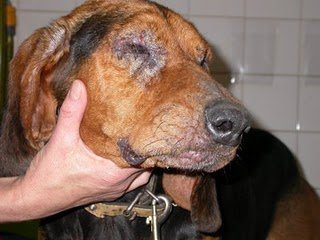Comes the good weather and rising temperatures, two factors bring with them, among other things, the increase in the incidence of a disease with high impact health in our pets, that it is a Zoonoses It can be transmitted to man. We are talking of the Leihmaniosis.
The Leihmaniosis is very present in the South of Europe, especially in the Mediterranean basin, a highly endemic area, although there is also a lot of casuistry in South America. In all it is estimated that you there are around 2,5 millions of dogs infected in the endemic area of Europe, Although there are also cases of dogs infected in areas not frequent, that they have been able to be infected in trips to such areas.
The P. Perniciosus, or also called Mosquito de las Arenas, It is the mosquito of the genus Phlebotomus causative of the transmission of the Leihmaniosis, a disease with high-impact in Extremadura, that in our autonomous community are the best conditions for the life cycle of this parasite, that is a Protozoan of the genus Leishmania.
- BIOLOGICAL CYCLE OF THE PARASITE
As in all parasites, the work carried out by vectors in the evolution of the parasite is very important.. In this case, the mosquito (the leishmania) He uses it to evolve a stadium to another inside the insect and getting to parasitize to new hosts may be at a considerable distance.
The cycle begins with the female sandfly bites for blood, because the male is vegetarian. In this way the mosquito is infected by the parasite inside of this, and leishmania continues its development and undergoes an important transformation: It evolves in a manner called amastigote to another known as promastigote, thus obtaining the parasite some cilia that give it mobility.
The next step is when the mosquito bites another mammal again., inoculando on the skin of the host the infective forms of leishmania (Promastigote). The defenses of the host, more specifically macrophages, they engulf and try to eliminate the organism leishmania, but the parasite has specific mechanisms to avoid host defense. This, they evolve to an evolutionary form called Amastigote and multiply within macrophages. When they are sufficiently full of parasites they reventarán and parasitarán other macrophages.
- THE DISEASE IN DOGS
Dogs exposed to the parasite can develop the disease, because this depends on several factors, among them the race of the can. There are certain breeds more susceptible than others to develop the disease. The Ibizan Hound is highly resistant to disease.
Age is also a factor to take into account, Since young animals and the senior (more than seven years) are more likely to develop clinical signs. And equally important is the immune response of the dog, because most do not develop clinical disease.
Taking these factors into account, the dog can become infected presenting clinical signs; the animal to remove the parasite full or that infected dogs do not develop the disease, Although any immune problems can do to develop the disease.
- CLINICAL SYMPTOMS
Leishmaniasis in a disease that can affect various organs, presenting a wide variety of clinical manifestations or symptoms. In general we can classify the disease in dermal and Visceral leishmaniasis.
The most obvious symptoms of dermal leishmaniasis are dermatitis with visible scaling; alopecia around the eyes, ears and legs; ulcer and scabs; and Onicogriposis (nail growth).
And the signs of systemic or visceral leishmaniasis are widespread Linfoadenomegalia (increase in lymph nodes); thinning; anemia; enlargement of organs such as the liver and spleen; eye conditions; subsequent claudication; bleeding from nose, aparato digestivo, etc; and laboratory abnormalities.
In the event that our pet presents some of these symptoms or we suspect that it may be infested, It is essential to visit the veterinarian of confidence, who will be in charge of the diagnosis of the disease and possible treatment, because it is important to know that there is treatment with the result of the improvement of the symptoms, but there is no complete cure.
- HOW TO PREVENT
There are several formulas for the control of the Leshmaniosis for several years, especially mechanisms to prevent the bite of the mosquito in our animals.
In the veterinary clinic you can find collars and pipettes that prevent bites. We must bear in mind that they are not one hundred percent effective and if our animal is in endemic areas we should avoid walking our pets during the hours of greatest sandfly activity., that is to say, Dawn and dusk.
Finally, It should be noted that for a few months your veterinarian has another tool to prevent the development of this dangerous disease. It's a vaccine that is giving good results in Europe and that since the beginning of this year being marketed in Spain.
Source: digitalextremadura.com – Rubén butter
Photos:
– consejeroveterinario
– compactonea.com
– vidaanimalenclaromeco



